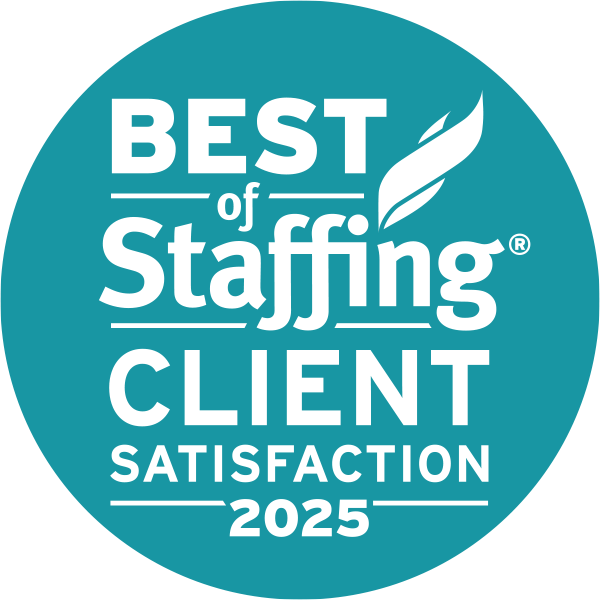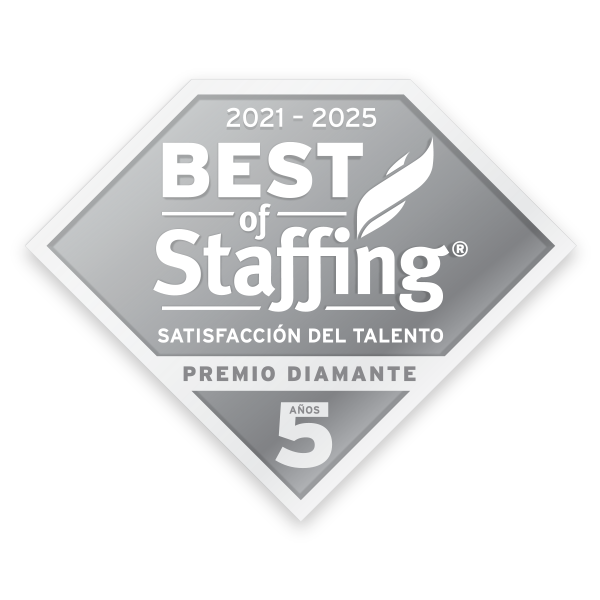
Hiring a single professional is hard; hiring many is harder. When your team has multiple openings, there’s more roles to define, applications to review, employees to onboard, and stakeholders to align. All the while, you have less time to dedicate to each individual hire.
Plus, more often than not, you’re hiring against a deadline. Maybe, a special project demands it. Or perhaps, your company has already outgrown your team’s bandwidth. You might be building a team from scratch or simply expanding. But whether you need contract designers, growth marketers, sales hires, or experts across disciplines—you need to scale fast.
Every team is unique, but this blueprint for growth is applicable to anyone hiring several professionals at once or recruiting in bulk. No matter your talent needs, follow these expert insights to build and scale a high-performance team.
- Start with the end in mind.
- Prioritize roles by impact and seniority.
- Don’t sacrifice quality for speed.
- Onboard and train your team at scale.
- Leverage the right mix of resources.
1. Start with the end in mind.
Don’t just define individual roles; determine your team’s overarching goals. Before making a single hire, conduct a gap analysis to be sure you’re hiring with intention.
Ask yourself: What are the key deliverables and business outcomes you aim to achieve? What skills and positions are missing from your current team? What organizational structure best aligns with your objectives? Do you need to scale in-house capabilities, or build a project team quickly? Do your goals truly require filling multiple roles immediately, or can you hire in phases?
Consider your present aims and future aspirations from the start. For project-based work, create a detailed plan—complete with a project timeline. Then, predict your hiring needs and prepare accordingly. Assessment and strategic planning prevent wasted effort and ensure you’re hiring the right people for the right reasons.
2. Prioritize roles by impact and seniority.
Not every position can be filled at once, and not all roles carry equal weight. While each opening may be important, some are typically more vital than others. Evaluate which roles will have the most immediate and significant impact on your business.
Each team is different, but leadership positions are often the most integral. They’re also the key to avoiding one of the most common mistakes of high-volume hiring: recruiting more than you can manage. Plus, when executing projects, leaders can evaluate and elevate your plans, setting a strong foundation from the start.
Newly hired leaders not only provide immediate oversight and accountability; they also help you bring on others. Be sure to include them in the hiring process to ensure they’re aligned on the culture and direction of their teams. Given their position and past experience, these professionals are uniquely equipped to refer connections, share insights, and ensure cohesion.
3. Don’t sacrifice quality for speed.
When hiring in bulk, the pressure to move quickly can be intense, and it can be easy to see people as numbers. Resist the temptation to cut corners. And treat every applicant with empathy. Rushing can cost you more time than moving slowly if it results in poor hires.
Always eliminate any unnecessary steps from your hiring process. But never skip critical measures in the interest of speed. Clearly communicate expectations and monitor performance to avoid misalignment and inefficiency. And don’t underestimate the importance of cultural fitness when building teams. To ensure success, establish clear hiring criteria that accounts for culture, use standardized interview questions, and create streamlined evaluation protocols.
Rather than vetting less, use applicant tracking systems (ATS) and emerging AI tools to vet smarter. In addition, you should always build a pipeline of pre-vetted candidates ahead of time if possible, especially when hiring large groups in stages.
4. Onboard and train your team at scale.
Onboarding and training are often overlooked when scaling. Yet, they’re essential for building a high-performance team. A poorly planned or inconsistent process can lead to longer ramp-up times, low performance, and early turnover. So, don’t make the mistake of neglecting onboarding needs.
Balance consistency with role specificity as you standardize the process to hire at scale. Whenever possible, train new hires in groups. But be sure to communicate role-specific KPIs, workflows, and tools as well. A structured onboarding process isn’t just about training—it’s about communication and continuity. Document everything to prevent knowledge loss and ensure seamless transitions.
Assigning mentors, scheduling check-ins, and pairing new hires with key stakeholders can also accelerate learning and integration. Just remember: the more you hire at once, the more difficult it is to give people the attention they need. So, space out your hires based on your training capacity, or expand your resources before hiring a large group simultaneously.
5. Leverage the right mix of resources.
If your talent needs are too great or niche for your internal team alone, lean on external partners for support. From team staffing to recruitment process outsourcing (RPO), there are many different services that can support high-volume hiring goals.
But before you invest in bulk staffing or any other service, carefully evaluate your options. The decision between contractors and direct hires isn’t the only one you need to make. Between lesser-known offerings like fractional executives or managed solutions, you likely have more choices than you might realize.
Traditional service providers and agencies may be too expensive or challenging to manage. However, there’s no one-size solution that fits all, and a balanced mix is often best. Consider your hiring experience, timeline, budget, and existing partnerships as you decide what’s right for your organization. Then, continuously reassess as your needs and capabilities evolve.
Final Thoughts
No two organizations are the same. Scaling a high-performance marketing team and building a sales department are two very different feats. But each requires a careful balance of strategy, efficiency, and adaptability.
In any case—by starting with the end in mind, prioritizing high-impact roles, and leveraging the right mix of resources, you can succeed without sacrificing quality. From vetting to onboarding, the key is to move fast—without rushing. Smart hiring isn’t just about how quickly you can act, but how effectively you can build a team that thrives.
When done right, it’s both a response to immediate business needs and an opportunity to strengthen your organization for the long haul. Plan strategically, invest in your hires, and build a team that not only hits your performance goals but exceeds them.
Build a high-performance team today.
From marketing to sales and beyond, we help high-performance teams scale to new heights. Our specialized recruiters have turned groups for 4 into departments of 100+. Partner with us to expand your team or build one from scratch.
Request Team Staffing Support
Fill out the following form. We’ll be in touch within 24 hours to support you.







